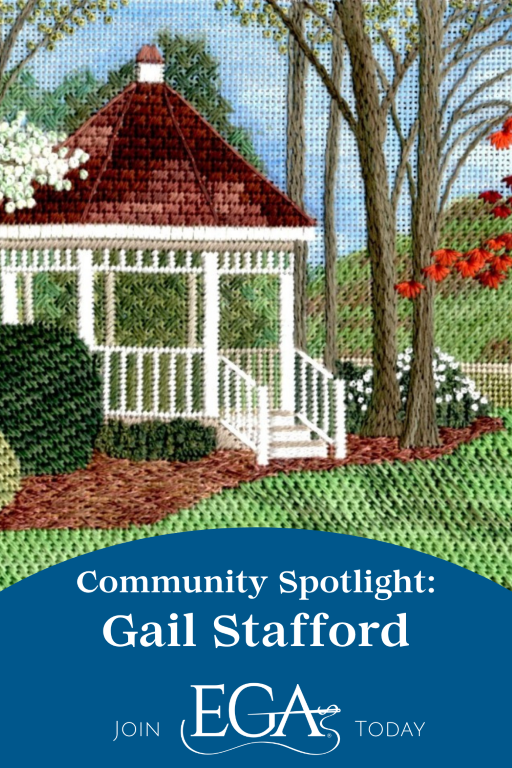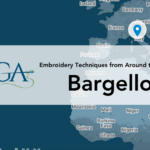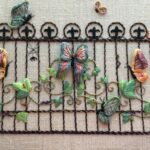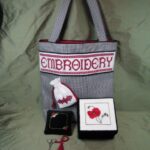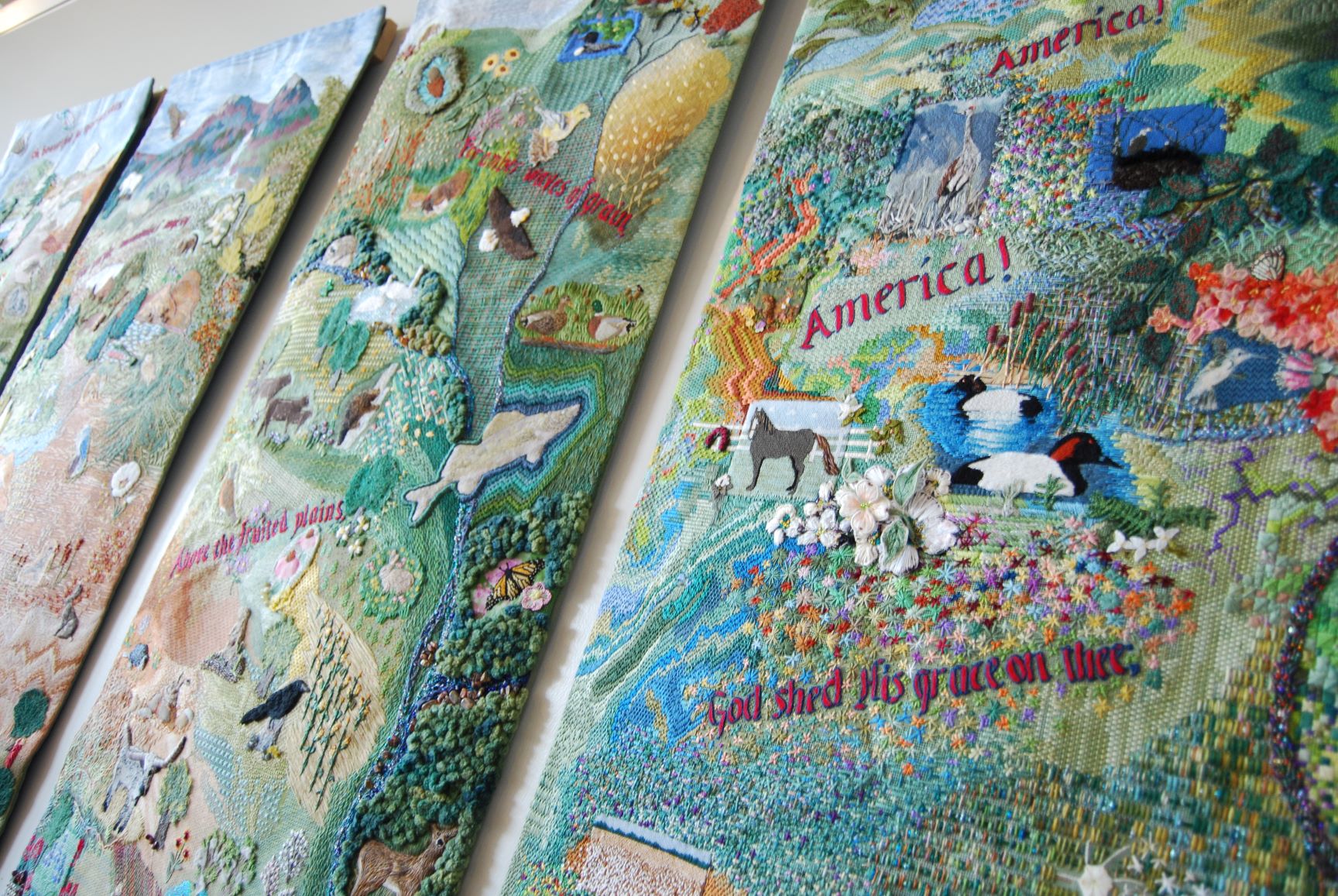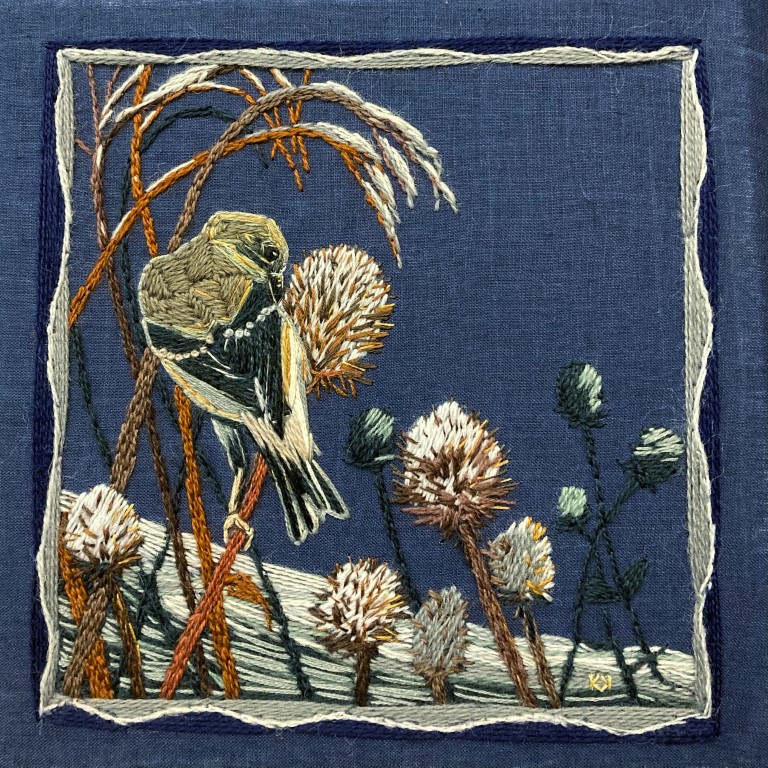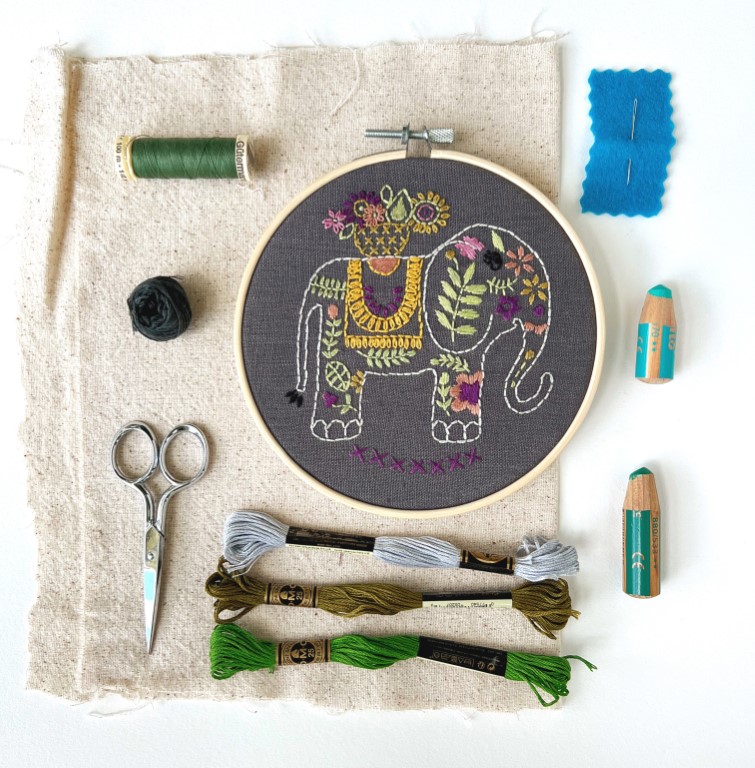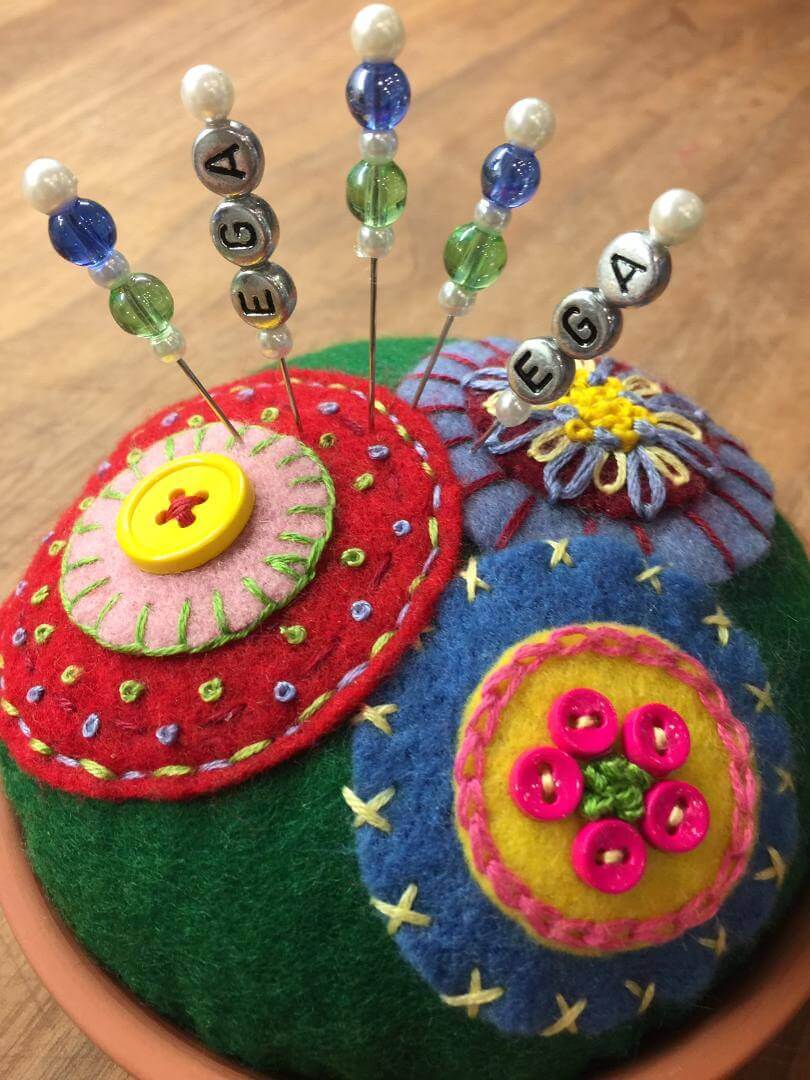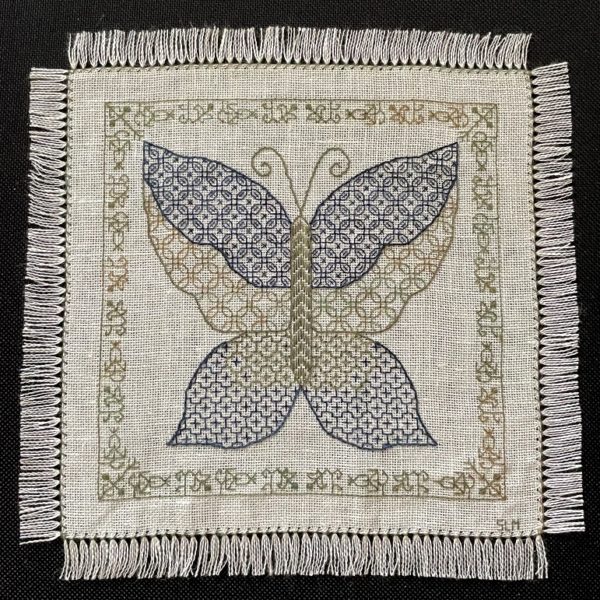This month we were excited to talk with Gail Stafford, who in addition to designing and teaching numerous Bargello pieces also holds EGA Master Craftsman certifications in Canvas Embroidery, Color for Needlework, and Design for Needlework. A background in mathematics informs the precision required for geometric Bargello design work, and Gail has also developed an expert sense of color and understanding for translating landscapes into beautiful canvas embroidery designs.
When did you first start embroidering?
I don’t recall when I first started doing embroidery. I remember doing some crewel pieces when I was in high school but don’t know how I was introduced to that. I did a lot of counted cross stitch while in college and in the years that followed. I joined my first EGA chapter in 1976 and was then introduced to many different types of embroidery.
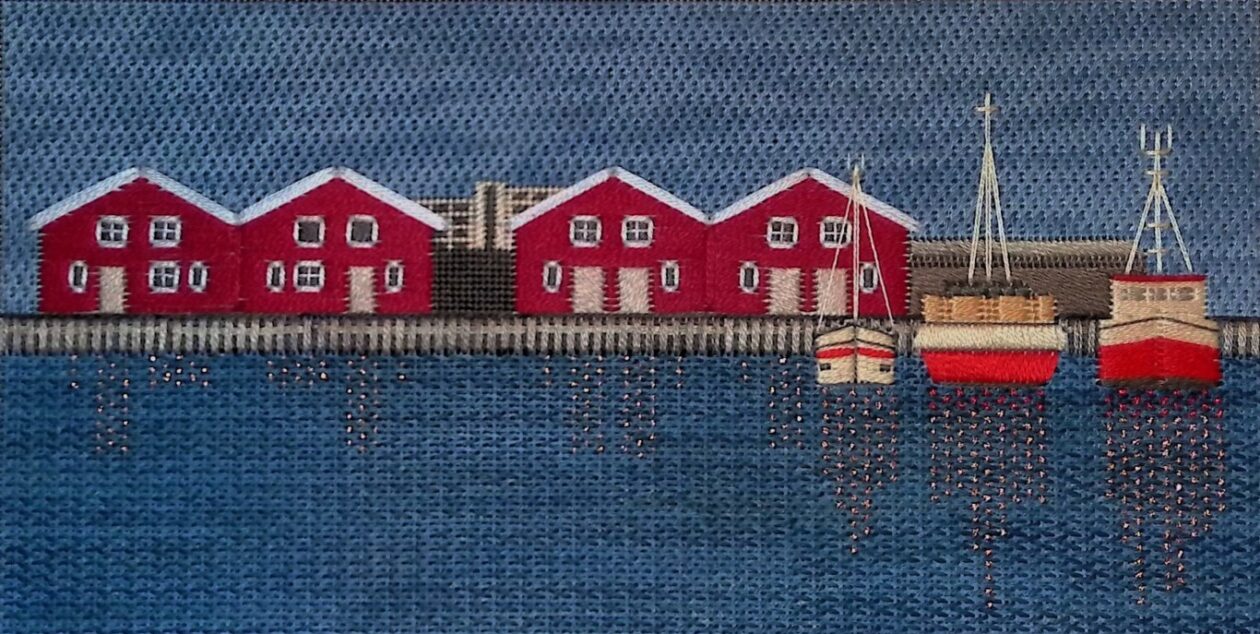
You were a math teacher at a small liberal arts college in eastern North Carolina (since retired). Do you find math skills useful when it comes to embroidery?
I think math skills are very useful in embroidery. If I want to stitch a band sampler, it is important to understand the length of a stitch and how to put different stitches together so that they are compatible with the width of the sampler. Florentine Embroidery, also referred to as Bargello, uses stitches that form all kinds of patterns. In many of my earlier canvas pieces, I used rotation of a stitched square motif to create a design. One major theme of mathematics is problem solving and designing new needlework pieces is an exercise in problem solving.
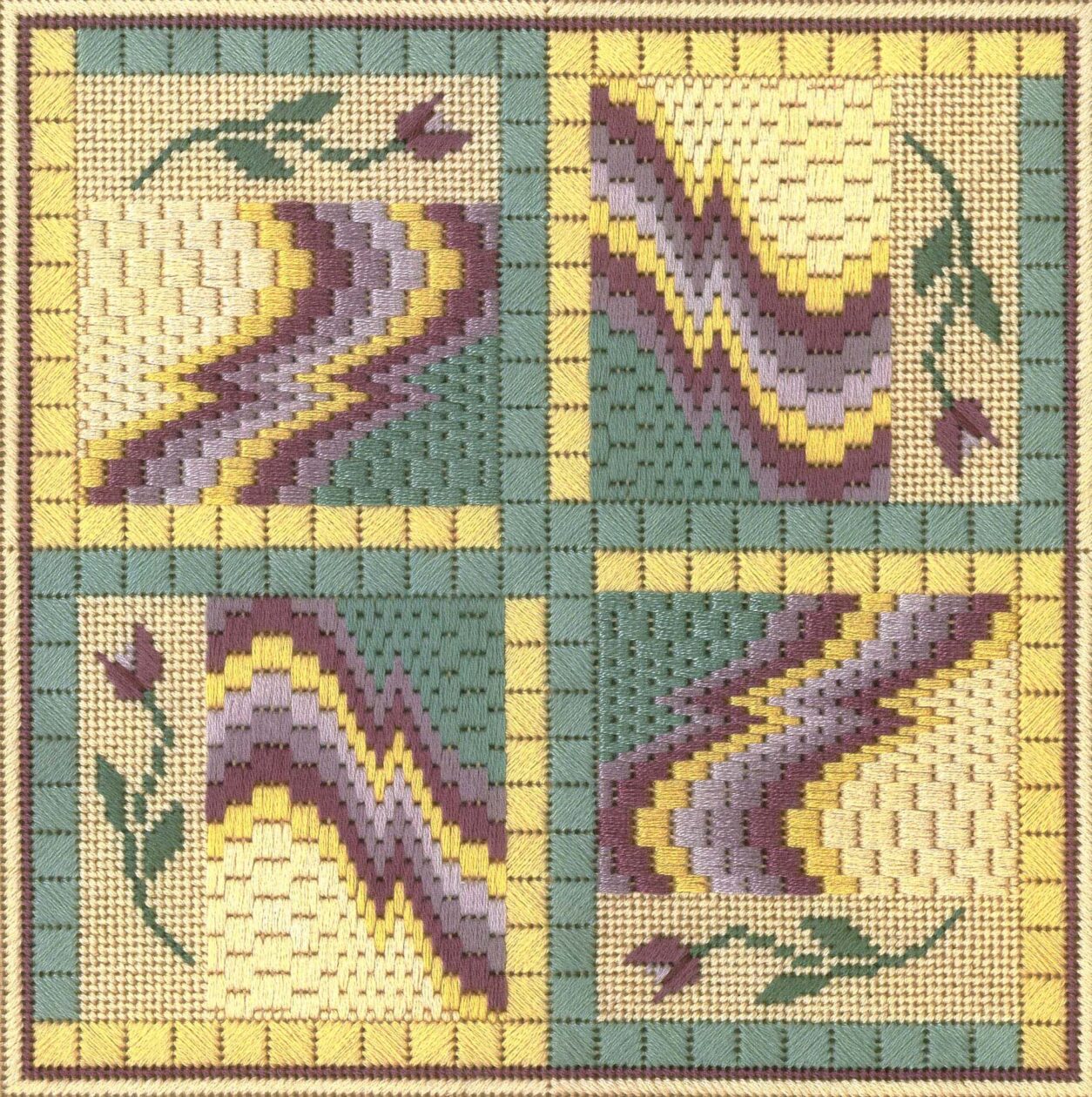
Where do you find inspiration for your designs?
For many years, I stitched a new Bargello sampler each summer. I don’t know what inspired me to continue stitching these except that I liked the challenge of putting patterns together in a pleasing way. In more recent years, I have focused much of my attention on landscape designs. Inspiration for these often comes from beautiful scenes that surround me and not necessarily from visiting special places. Several of my landscape designs came from scenes in my neighborhood or town.
Your Bargello and Design Course (currently a GCC Lightning Round, soon to retire on December 31, 2024) is designed to help intermediate and advanced stitchers design their own Bargello sampler. What does your design process look like?
In the Bargello and Design GCC, I guide people to try their hand at design using Bargello stitches. In the text, there is much information about color balance and pattern size balance and there are examples of samplers other than mine in the text.
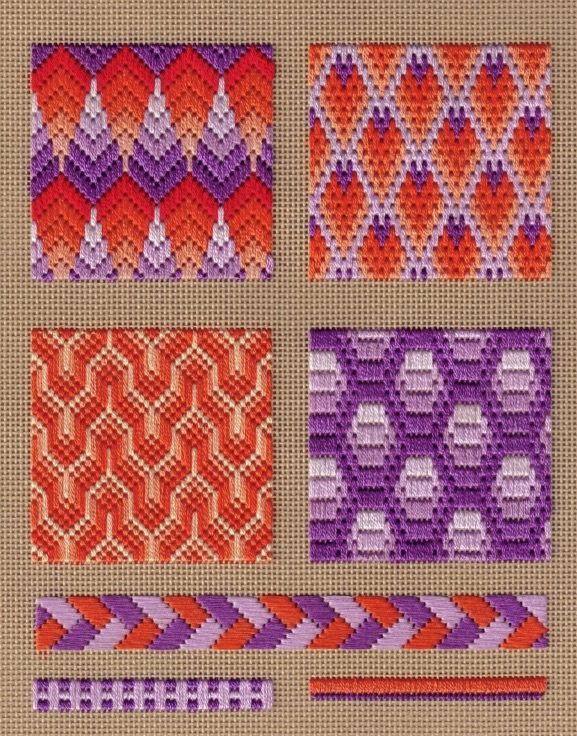
In guiding people to create a square Bargello sampler, we start with a center motif and then stitch a background. Then we choose patterns to place in opposite corners around this motif, working to balance these areas. Following that, we learn about including spacers, borders, and corner motifs. For many people, this is a first attempt at choosing their own colors and creating a design. This is the same design process I use for a Bargello sampler.
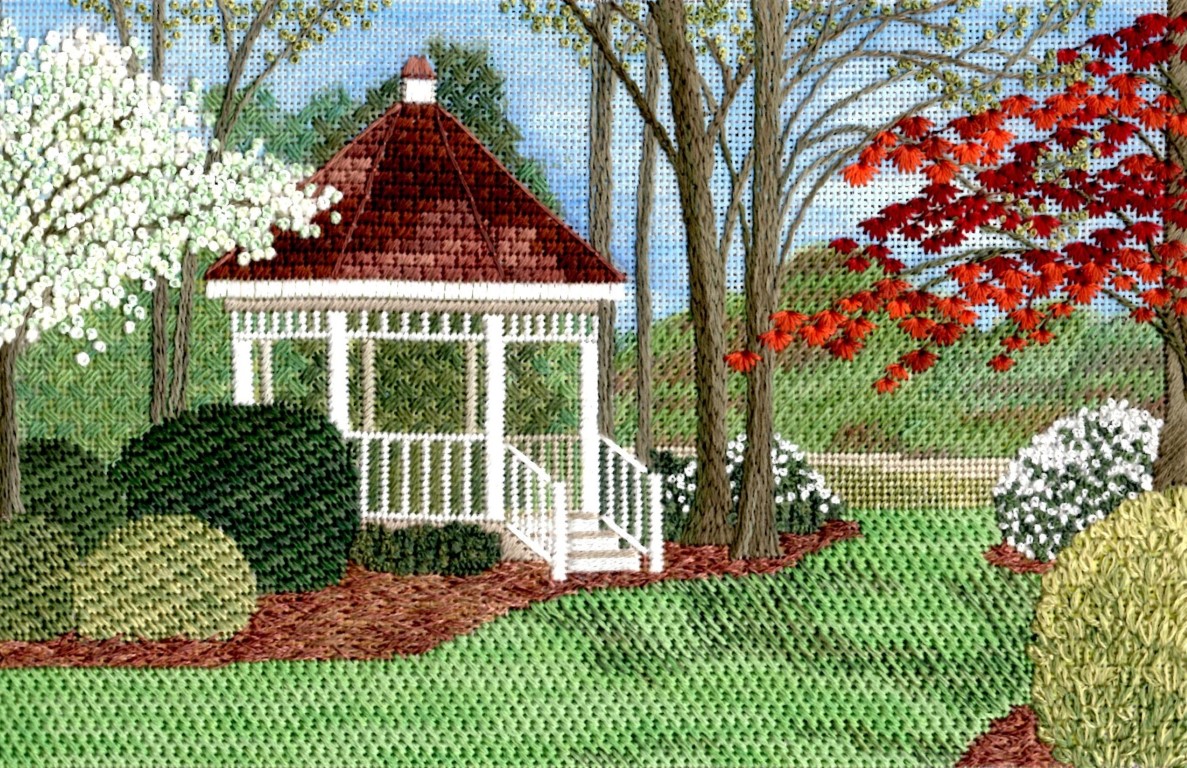
You are well known for your Bargello designs and classes. What drew you to the Bargello technique?
The geometric nature of Bargello and the creation of patterns is probably what drew me to Bargello. One of the first classes I took when I joined EGA was a four-way Bargello pillow.

Aside from being an expert in Bargello, you also hold EGA Master Craftsman certifications in Canvas Embroidery, Color for Needlework, and Design for Needlework. What drew you to these particular needlework studies?
At some point, creating a new Bargello sampler each summer became old and repetitive. I knew I wanted something to challenge me in my needlework, and I thought the Canvas Master Craftsman program might be the thing. I signed up for it and never looked back. I learned things I did not know and loved the challenge of creating adaptations and finally an original design for the step 6 assignment. The program provided just the challenge I wanted and needed.
After that I enrolled in the Color program and it was completely different, but again provided lots of challenges. This program has a lot of writing assignments as well as stitching assignments. I like writing and researching, so this part of the program was enjoyable and educational. The chairman of the Color program encouraged me to consider writing an EGA correspondence course for some of the designs I created in the Color Program. I followed up on that and created some correspondence courses. When I finished those two programs, a friend encouraged me to enroll in the Design program, so I did that. It provided many challenges and interesting assignments and many of those designs became teaching pieces.

You’re teaching several classes at 2025 National Seminar, including a canvas embroidery class that asks students to paint as well as stitch the canvas (214 Fog in the Mountains). What inspired you to incorporate paint into your design work?
I use some paint in my line designs for two reasons: to help students understand where a particular region is located and to put paint behind an area so I can use light stitching and let the paint color show through instead of the canvas color.
The first time I used paint on a canvas, I thought it was very scary. I now use paint in class for some of my designs, because this is a way to introduce painting to students who have never done it before. I am there to supervise their first attempt and help them get through that, so they may consider using paint on their own in the future. In Fog in the Mountains, students paint the distant tree area and then use light stitching to stitch over the paint in this area of the design.
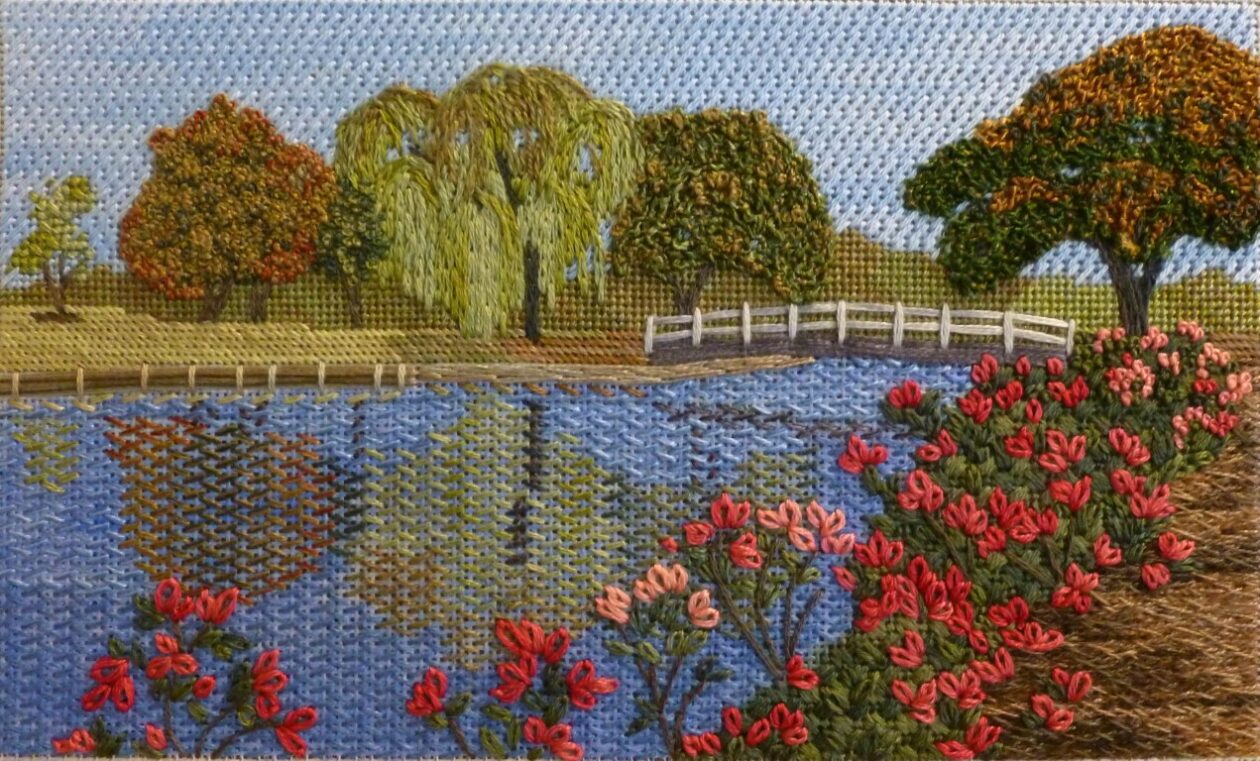
What should students new to Bargello and Bargello design understand about the technique?
It would be nice if students taking Bargello and Design already have some understanding of Bargello. However, if they don’t have this prior knowledge there is a section in the text that discusses what it means to stitch Bargello patterns, how Bargello patterns are formed, and the different types of Bargello patterns. There is also information about selecting color families, creating balance and unity in a sampler, and much more. The course is really a design course.
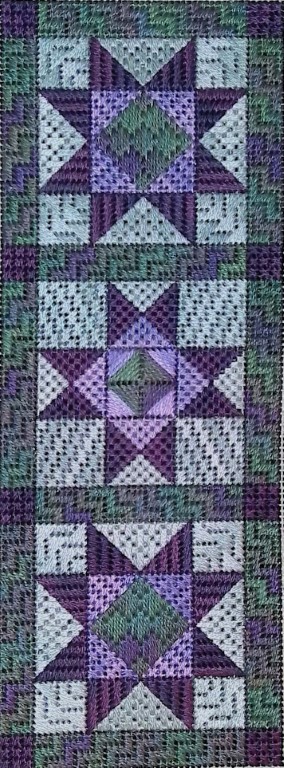
What’s the best piece of needlework advice you’ve received?
The best needlework advice I have ever received is “try it.” So often we don’t know if something is going to work or not. The only way to know is to try what you might think will work. For this reason, I regularly use a doodle cloth to try out patterns, threads, stitches, and colors when I am designing a piece of embroidery. A doodle cloth is just a piece of canvas in the same color and mesh size as the actual piece that can be used to sample stitches.
What are you currently working on (or looking forward to working on)?
I am not currently working on a project, but in the coming months I hope to create a new quilt square design and a landscape design containing lavender fields.
